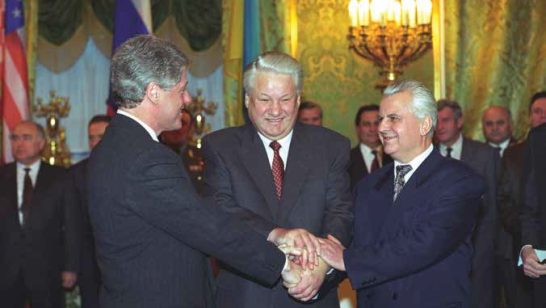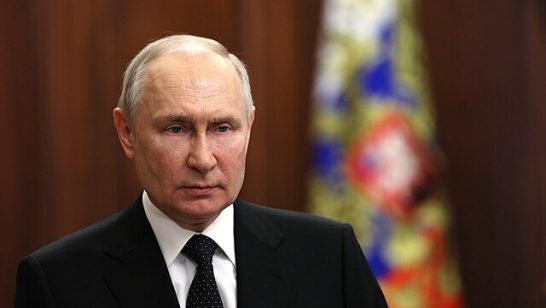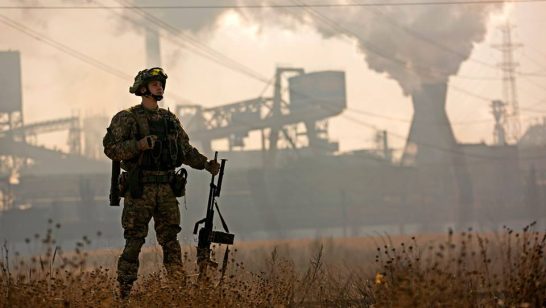
This year marks NATO’s 75th anniversary, a testament to its enduring legacy in maintaining transatlantic security. However, this milestone coincides with two additional significant events: the 10-year anniversary of the Russian invasion of Ukraine, as well as the two-year anniversary of the February 2022 escalation, underscoring the urgency of addressing the ongoing conflict.
As NATO readies to celebrate another milestone birthday, questions about the alliance’s efficacy in addressing global crises loom large. Amidst geopolitical tensions, particularly concerning Ukraine’s sovereignty, the discussion around NATO’s commitment to collective defence takes centre stage. NATO’s strategic objective with regard to Ukraine becomes more crucial in light of Putin’s decision to escalate the Russia-Ukraine war once more by bolstering the country’s defence budget by a staggering 29 per cent to approximately $140 billion for 2024. This figure dwarfs Ukraine’s defence budget of $40 billion for 2024, highlighting the vast disparity in military capabilities between the two adversaries.
The 31 NATO member states, plus impending member Sweden, boast a formidable combined GDP of approximately $45.93319 trillion (nominal, 2022), representing nearly half – 45.69 per cent – of the world’s GDP, and more than 20.5 times the size of Russia’s $2.240 trillion economy. Yet, the effectiveness of this collective power hinges on articulating a strategic goal, backed by resource allocation and unwavering commitment.
As NATO readies to celebrate another milestone birthday, questions about the alliance's efficacy in addressing global crises loom large. Leon Hartwell
Consider the Russia-Ukraine war, a conflict which has the potential to dramatically redefine the international order. Prominent British political scientist Michael Cox recently asserted that, despite the high stakes of the war, the transatlantic community has not yet answered a pivotal policy question pertaining to defining a strategic goal, “Do we want Ukraine just not to be defeated, or do we want Ukraine to win?”
In the absence of a strategic goal, statistics by the Kiel Institute for the World Economy tell a bleak story. Over the period January 2022 to January 2022, Estonia, Denmark, and Lithuania demonstrated relatively strong support for Ukraine, with their combined aid commitments to Kyiv amounting to 4.1 per cent, 3 per cent, and 2 per cent of their GDP, respectively. However, over the same period, the largest NATO economies—the United States, Germany, and the United Kingdom—only committed 0.32 per cent, 0.5 per cent, and 1.1 per cent of their GDP to Ukraine, respectively.
As a result, over the past two years, the EU and the U.S. contributed a mere €144.13 billion and €66.7 billion, respectively, towards Ukrainian aid. As such, the U.S., which has contributed about half of Ukraine’s military aid, has spent around €33.35 billion annually on Ukraine. While it may sound like a substantial amount, keep in mind that those figures include military, financial and humanitarian aid. Besides, the U.S. alone spent $2.313 trillion in Afghanistan (roughly $115.65 billion annually), which is a conservative estimate given that it excludes funds for lifetime care for American veterans of this war.
Moreover, despite lofty speeches in Western capitals about the urgent need to back Ukraine, the gap between pledged commitments and actual disbursement remains glaring. Of the €144 billion pledged by the EU, only €77 billion had been allocated, underscoring the challenges in translating promises into tangible support. Even North Korea and Iran, two of the world’s most heavily sanctioned countries, seem to outpace the EU in supporting their ally. Over the past couple of weeks, the EU, for instance, delivered only 30 per cent of the total 1 million artillery shells it pledged to Ukraine. In contrast, reports suggest that North Korea dispatched 6,700 containers to Russia, potentially holding approximately 3 million rounds of 152 mm shells, while Iran delivered 400 missiles to Russia, including surface-to-surface ballistic missiles capable of striking targets within a range of 300 to 700 kilometres.
Moreover, despite lofty speeches in Western capitals about the urgent need to back Ukraine, the gap between pledged commitments and actual disbursement remains glaring. Leon Hartwell
As such, while Russia’s military budget and capabilities are surging in order to satiate Putin’s imperialistic appetite, the West seems content on handing out bangers and mash to Ukrainians at the gates of the Gulags, rather than supporting the country to defeat an invading genocidal adversary.
The reality is that if each NATO member and Sweden were to pledge 1 per cent of their GDP per annum to support Ukraine, Kyiv would receive an annual infusion of $459 billion, which would provide it with the ability to defeat Russia. With empty military warehouses across Europe, money alone is not the only answer to Ukraine’s problems, as there are important logical challenges that have to be resolved. But a strategic goal centred around Ukraine’s victory, followed by a concrete commitment of support and delivery, will be paramount to set the stage for the desired outcome.
While the 1 per cent commitment to Ukraine appears substantial, it is imperative to contextualise it. During World War II, both the U.S. and the UK allocated up to 40 per cent and 53 per cent of their GDP, respectively, towards defence spending. Furthermore, stopping Russia’s aggression now will be less costly than trying to put the genie back into the bottle at a later stage. It should also serve as a deterrent to China, and signal that NATO will unite in times of crisis and the Alliance’s actions are not short-sighted. As such, a 1 per cent commitment towards Ukraine’s defence does not constitute an unreasonable demand, especially in light of the fact that Russia arguably poses the most immediate threat to the global order.
The reality is that if each NATO member and Sweden were to pledge 1 per cent of their GDP to support Ukraine, Kyiv would receive an annual infusion of $459 billion, which would provide it with the ability to defeat Russia. Leon Hartwell
Critics may contend that the West is not engaged in a direct conflict with Russia. However, in March 2022, shortly after Putin’s escalation of the Russia-Ukraine war, the late Christopher Coker, renowned as one of the most prominent war scholars of the twenty-first century, was questioned about whether the West is effectively in a state of war with Russia. Coker responded:
“We’ve been at war with Russia for the last couple of years in terms of cyber conflict, cyber subversion, cyber espionage, disinformation, interference in the electoral cycles, [and the] Brexit referendum. We can all question how important the Russian factor was in deciding the outcome of elections or the outcome of the referendum … but this kind of interference in internal affairs is an act of war below the nuclear threshold.”
Moreover, he acknowledged that some Western leaders advocate for Putin’s removal, while others deem the cost too high. Coker posed a critical dilemma:
“If we don’t defeat Putin now, we’re going to have to defeat him on another occasion when we’re going to be less united and when we won’t have Ukraine doing most of the fighting and doing it very effectively.”
Beyond his assertion about Russia’s ongoing acts of war against the West, Coker’s assessment also rings true regarding Ukraine’s resilience as a formidable adversary to Russian forces. Ukraine’s war machine has effectively neutralised a staggering 87 per cent of the total number of active-duty Russian ground troops present prior to the full-scale invasion, along with destroying two-thirds of their pre-invasion tank fleet. Against all odds, since February 2022, Ukraine has destroyed one-third of the entire Russian Black Sea Fleet, marking a significant blow to Russian naval capabilities in the region. Consequently, Russia faces a pressing need to replenish its depleted troops and military equipment lost on the Ukrainian battlefield.
Sustaining a defence budget equivalent to 7.1 per cent of its GDP will be an untenable burden for the Kremlin. This creates a critical window of opportunity for NATO to decisively curb Putin’s ambitions once and for all. Besides, Europe should heed the warning signs coming out of Washington D.C. ahead of the 2024 election. Even if Trump fails to be re-elected, it is becoming more difficult for the U.S. to mobilise military support for Ukraine. The defeat of Ukraine will hit Europe first before it impacts the U.S., and eventually, it will pose serious challenges to the EU and NATO.
Herein lies the dilemma: as Ukraine battles for its sovereignty, NATO grapples with its role as a collective security apparatus. While its economic might is undeniable, the willingness to mobilise resources for strategic imperatives remains uncertain. In reimagining NATO’s purpose, a clear commitment to Ukraine to defeat Russia represents not only a test of solidarity but also a reaffirmation of the alliance’s core values in the face of geopolitical upheaval.
The opinions articulated above represent the views of the author(s) and do not necessarily reflect the position of the European Leadership Network or any of its members. The ELN’s aim is to encourage debates that will help develop Europe’s capacity to address the pressing foreign, defence, and security policy challenges of our time.
Image credit: Wikimedia Commons / Estonian Foreign Ministry



